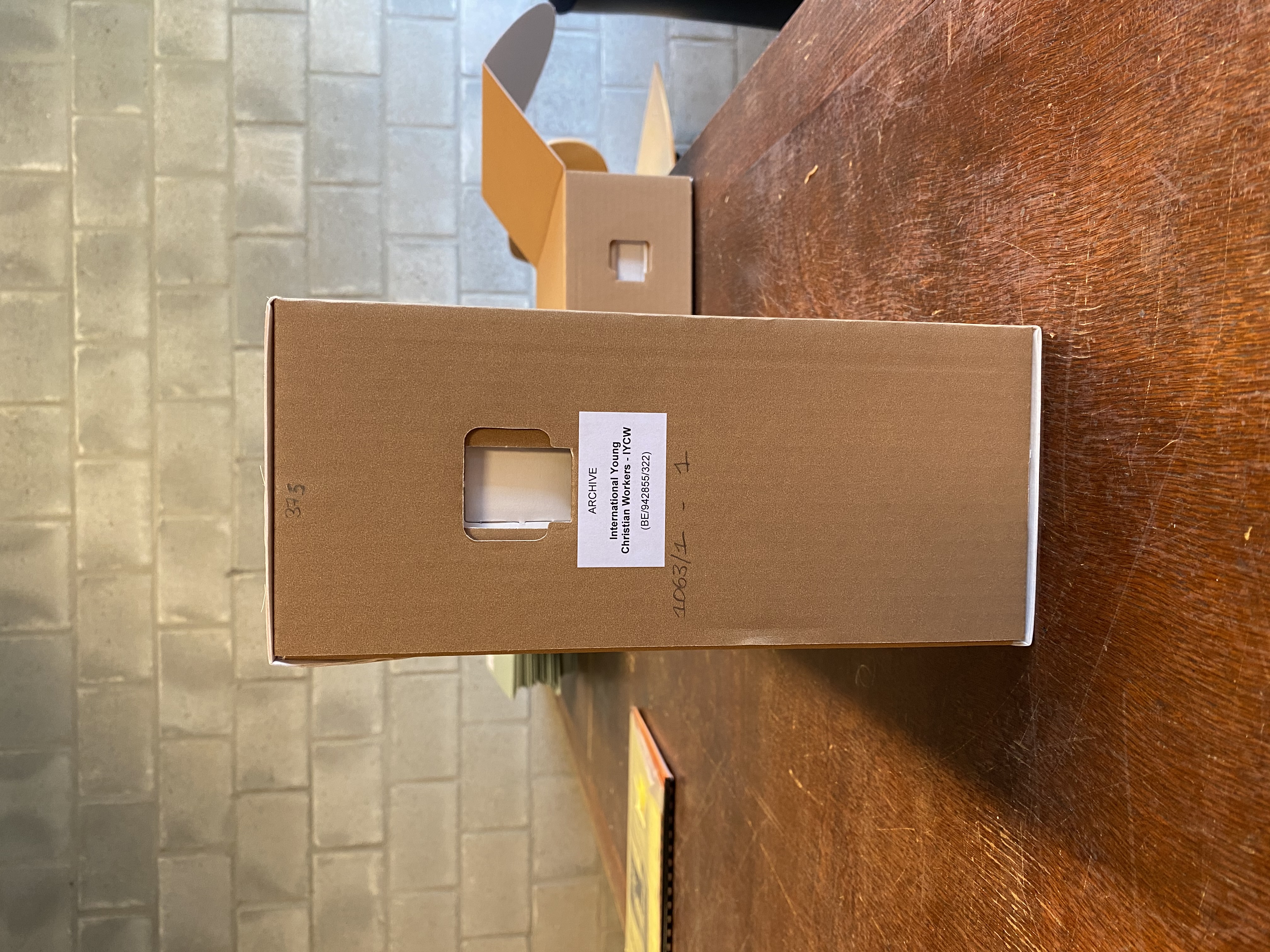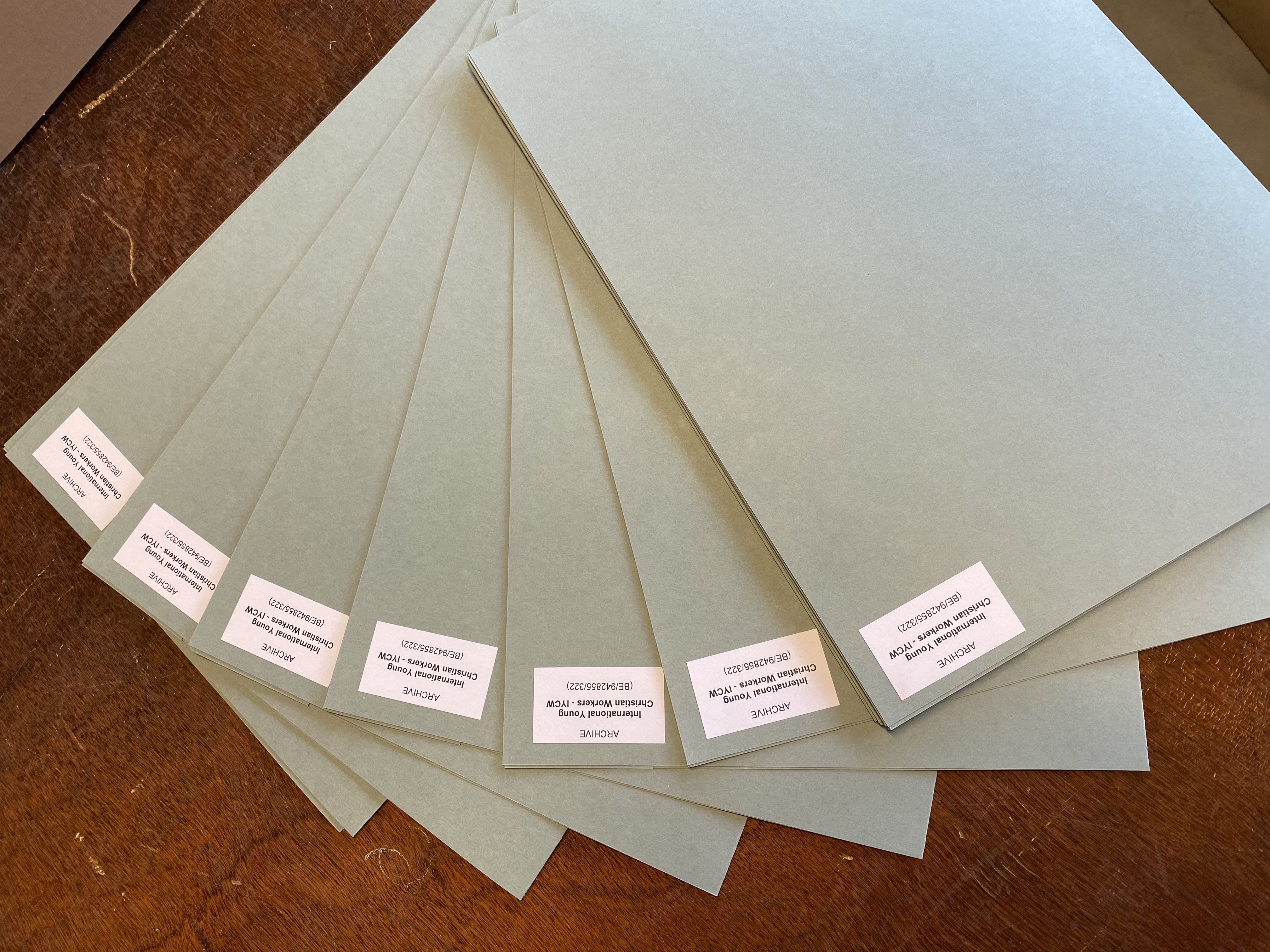
It has been two months since the IYCW archives were moved to KADOC, and since we have made good progress. In total, more than 1500 archive boxes were moved, which amounts to more than 160 meters! Here’s how we deal with such a large archive:
The process starts by putting the boxes on empty shelves in our depot. This allows us to gain an overview and match boxes that belong together, e.g. all boxes concerning International Councils. Then we apply ever more structure to the contents. For example, we first assemble all documents on the International Council in Beirut 1969 and then devise them into files or dossiers according to the subject; pieces concerning the preparation of the council, the subjects debated during the council, the elections, etc. Luckily, some sections already have an inventory made by members of the International Secretariat, which offers us a valuable guideline.

Now that the archive is unpacked, it is time to inventorize and repack the archive. Every file is first re-packed in sour-free envelopes and sour-free archive boxes. These boxes and envelopes are only marked with a number, so no more descriptions written with permanent marker! This is possible because every file gets a unique reference number in our software. Here we also describe the content of the file, how large it is, and in which box or boxes the file can be found. In our software, we also build a new inventory from scratch. The archive is devised into sections and sub-sections so that every file can be found easily.
When all this is done, the ‘new’ IYCW-archive is ready to put in our depot. The oldest documents in the archive are almost one hundred years old, but after repacking them and storing them on our shelves they will easily last a hundred more!

While this this may seem a complex process, there are several easy steps you can undertake to conserve your own historical YCW heritage. You can find our heritage conservation guide here: https://kadoc.kuleuven.be/2_erfgoed/22_uwerfgoed/index
In the video below, you can find an explanation on how you can access and translate our guide using a simple extension for your browser.


 English
English  Español
Español  Français
Français